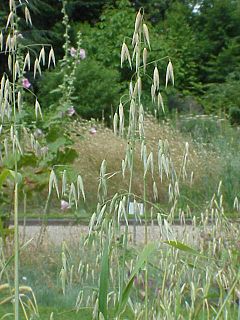
Avena is a genus of Eurasian and African plants in the grass family. Collectively known as the oats, they include some species which have been cultivated for thousands of years as a food source for humans and livestock. They are widespread throughout Europe, Asia and northwest Africa. Several species have become naturalized in many parts of the world, and are regarded as invasive weeds where they compete with crop production. All oats have edible seeds, though they are small and hard to harvest in most species.
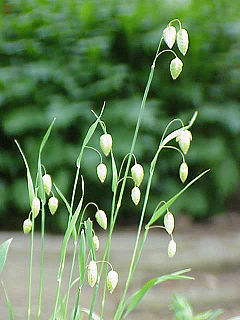
Briza is a genus of annual and perennial plants in the grass family, native to northern temperate regions of Eurasia, North Africa, and certain islands in the Atlantic.

Poa is a genus of about 500 species of grasses, native to the temperate regions of both hemispheres. Common names include meadow-grass, bluegrass, tussock, and speargrass. Poa (πόα) is Greek for "fodder". Poa are members of the subfamily Pooideae of the family Poaceae.
Athroostachys is a Brazilian genus of bamboo in the grass family.
Colanthelia is a genus of South American bamboo in the grass family, native to southern Brazil and northeastern Argentina.
- Colanthelia burchellii(Munro) McClure - São Paulo
- Colanthelia cingulata(McClure & L.B.Sm.) McClure - Santa Catarina, Paraná, São Paulo
- Colanthelia distans(Trin.) McClure - Goiás
- Colanthelia intermedia(McClure & L.B.Sm.) McClure - Santa Catarina, São Paulo
- Colanthelia lanciflora(McClure & L.B.Sm.) McClure - Rio Grande do Sul, Paraná, São Paulo
- Colanthelia macrostachya(Nees) McClure - São Paulo, Rio de Janeiro
- Colanthelia rhizantha(Hack.) McClure - Rio Grande do Sul, Paraná, Misiones
Glaziophyton is a Brazilian genus of bamboo in the grass family.

Bothriochloa is a common and widespread genus of plants in the grass family native to many countries on all inhabited continents and many islands. They are often called beardgrass, bluegrass or bluestem.
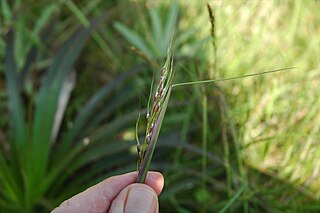
Piptochaetium, or speargrass, is a genus of New World plants in the grass family, native to North and South America. Piptochaetium is a bunchgrass genus in the tribe Stipeae.

Raddia is a genus of South American plants in the grass family, most of the species found only in Brazil.
Reitzia is a genus of plants in the grass family.
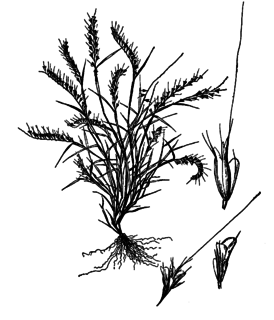
Aegopogon is a genus of New World plants in the grass family.
Agnesia is a genus of herbaceous South American bamboo in the grass family.
Arundoclaytonia is a genus of Brazilian plants in the grass family.

Amphibromus is a genus of grasses in the family Poaceae. Most are known as swamp wallaby grass. Most are endemic to Australia. One can also be found in New Zealand and there are two species in South America.
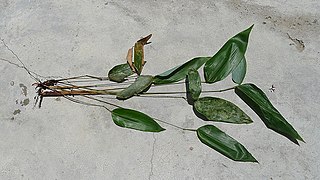
Sucrea is a genus of Brazilian plants in the grass family.
- Sucrea maculataSoderstr. - Rio de Janeiro, Espírito Santo
- Sucrea monophyllaSoderstr. - Bahia
- †Sucrea sampaiana(Hitchc.) Soderstr. - Espírito Santo†
Tatianyx is a genus of plants in the grass family. The only known species is Tatianyx arnacites, native to the States of Bahia, Goiás, Mato Grosso, Minas Gerais, and Pará.

Triraphis is a genus of African, Arabian, Australian, and Brazilian plants in the grass family. Needlegrass is a common name for plants in this genus.
Oplismenopsis is a genus of South American plants in the grass family. The only known species is Oplismenopsis najada, native to southern Brazil, Uruguay, and northeastern Argentina.
Eremitis is a genus of bamboo plants in the grass family, that is endemic to Brazil.
Canastra is a genus of bunchgrass plants in the grass family. Its species are endemic to Brazil.









